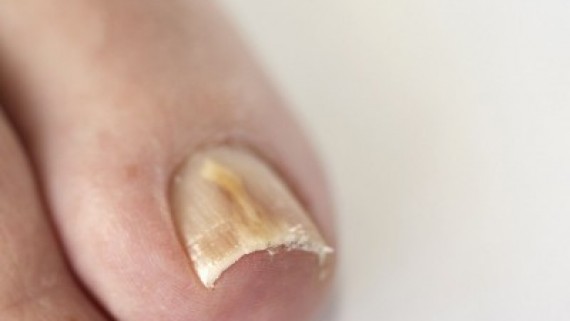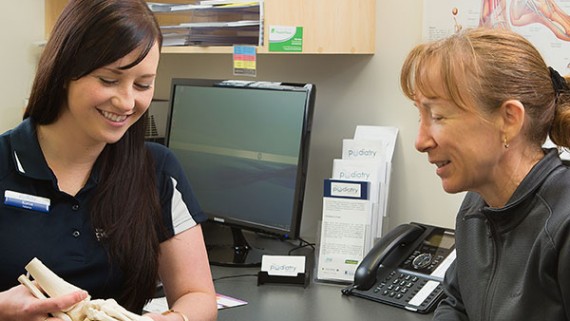Walking and Running
Did you know that daily walking and/or running are some of the most important steps in reducing your risk of heart disease, diabetes, osteoporosis and many other serious health conditions?
You may be wanting to improve your well-being, or reduce your risks of health conditions, or simply to start a new hobby, so here are some easy steps to begin your walking/running routine!
- Set realistic targets and goals. This could be a walking/running distance, weight loss (in combination with good diet), or seeing if you can improve your time running around the block.
- Ensure you have the most appropriate shoes possible by seeing a Podiatrist, who can also help you plan your walking/running sessions.
- Start off easy. This could mean a short walk around the block, or a light jog to the milkbar and back. Everyone is different, so do what works for you.
- Set a routine. Put a particular time aside each day for your exercise, and stick to it!
- If you’re feeling lonely, invite your partner, friend, colleague to exercise with you!
- Don’t feel bad if you have to skip a day, just stay positive and look forward to the next session!
- Make sure you’re having fun! Yes, you will get tired and sweaty, but if take notice of your surroundings, play some music and smile, you are on your way to making a beneficial routine!
For further advice on footwear, running, walking, click on the link below to make an appointment or call 1300 847 226.
http://www.thepodiatrygroup.com.au/booking/
The battle of the fungal nail!
Fungal toenails or onychomycosis is common, unpleasant and persistent in nature. Accounting for almost half of all nail problems, this slow growing infection occurs when microscopic fungi gain entry to the nail, usually through small trauma. Trauma allows the pathogen to enter the nail and nail bed.
Other causes
- Fungal organisms grow and spread in warm, moist environments and are usually picked up in warm damp areas like socks, shoes, public pools, gyms and showers.
- Not drying off the feet thoroughly following showers or exercise and wearing tight shoes or socks, can provide conditions the fungus needs for growth.
- People who have a compromised immune system, diabetes, circulatory problems and the elderly are particularly susceptible.
Symptoms
Fungal nail infections are contagious and can often spread from skin to nails. The poor cosmetic appearance that usually develops can cause some embarrassment. Nails can become discoloured, thickened, brittle, rough and weaken. Sometimes the infection can occur with an odour and can cause discomfort.
Types of Onychomycosis
Distal subungual onychomycosis – most common form of fungal nail that can cause the nail to become yellow brownish in colour, thickened, rough or crumbling.
Superficial white onychomycosis – this type of infection occurs on the outer surface and often appears as white spots. It is the easiest type of infection to treat.
Proximal subungual onychomycosis – occurs in the area of new nail growth at the beginning of the nail and is the least common.
Candida onychomycosis – typically occurs after trauma or damage to the nail that allows the fungus to invade. Most often occurs in people who frequently have their feet in water.
Treatment
As many people with fungal toenails can appreciate, it’s often difficult to eradicate fungal toenail infections, and like most things, prevention is always better than cure. Treatment varies depending on the type of fungal nail infection and the amount of nail involved, so it’s best to chat to your podiatrist who can recommend the best treatment option for your type of onychomycosis. In many cases nail lacquer medications are used, and in severe cases oral antifungal medication from your doctor, however this comes with potential side-effects.
Preventative measures
- Wear protective shoes in public showers and pool areas.
- Wash your feet regularly and dry them thoroughly when they get wet.
- Change socks daily, more regularly if you have increase perspiration or exercise.
- Avoid leaving toenail polish in place for long periods of time, wearing nail polish is not advised for those people who are suffering from nail fungus as it may encourage it to grow.
- Avoid nail solons who re-use their nail instruments, all instruments should be sterilised using an autoclave.
- Wear properly fitting shoes
If you suspect a toenail fungus, it’s recommended you see your podiatrist before it spreads. Podiatrists also have a tool to reduce thickness of fungal nails, this can enable topical medication to absorb and penetrate the nail easier, provide comfort of thickened nails and can help improve the appearance of the nail.
If you or someone you know would benefit from fungal nail treatment, please give us a call or book an appointment online at any of our podiatry clinics in Warragul, Drouin, Beaconsfield or Cranbourne.
Online Bookings
Online bookings are now available at The Podiatry Group.
For your convenience we have online bookings available across our Warragul, Drouin and Cranbourne clinics.
Your step towards better foot health is just one click away. Click here to book now.



